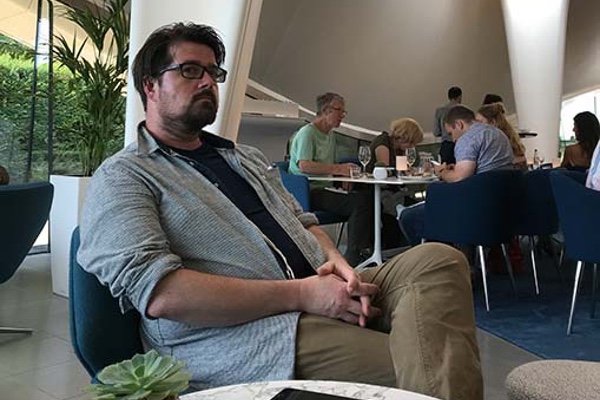“Watercolor is to improvise or die.”
Interview by Jennifer Nelson, WTP Feature Writer
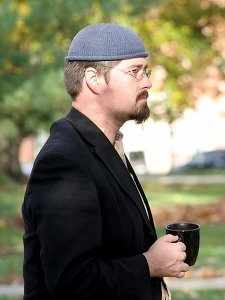 John M. Humphries is an artist who grew up in Texas, and teaches architecture and interior design at Miami University in Cincinnati, OH. His artwork has been exhibited in Japan, Germany, the Czech Republic, and the United States. He has received several awards, including the Award of Distinction from the Interior Design Educators Council and the International Juror’s Award of the American Society of Architectural Illustrators. He serves as a fellow of the Hambidge Center for Creative Arts and The Virginia Center for Creative Arts. He earned bachelor’s and master’s degrees in architecture from the University of Texas, Arlington.
John M. Humphries is an artist who grew up in Texas, and teaches architecture and interior design at Miami University in Cincinnati, OH. His artwork has been exhibited in Japan, Germany, the Czech Republic, and the United States. He has received several awards, including the Award of Distinction from the Interior Design Educators Council and the International Juror’s Award of the American Society of Architectural Illustrators. He serves as a fellow of the Hambidge Center for Creative Arts and The Virginia Center for Creative Arts. He earned bachelor’s and master’s degrees in architecture from the University of Texas, Arlington.
See his work in WTP Vol. VII #5.
Nelson: Many of your works are in watercolor, a difficult medium, but one that serves as an interesting counterpoint to the more precise of the structural. How did you come to this dichotomy in your work?
Humphries: I find watercolor both precise and loose. Unlike oil paint, which I used to work with, watercolor is to improvise or die. With oil, you can nearly endlessly massage to paint. With watercolor, the mark is permanent when you put the brush to the sheet. This requires both a desire and ability to improvise by shifting the color, making complementary marks or other ways of editing. I work with graphite lines, which score the page and resist water—this allows me to float the color right to the edge of the line. Both the pencil and the watercolor portion of the drawing have a sort of precision. I almost always work in a series and use an assembly line process. I paint all the blues on all the series, then the reds, then the oranges, etc.
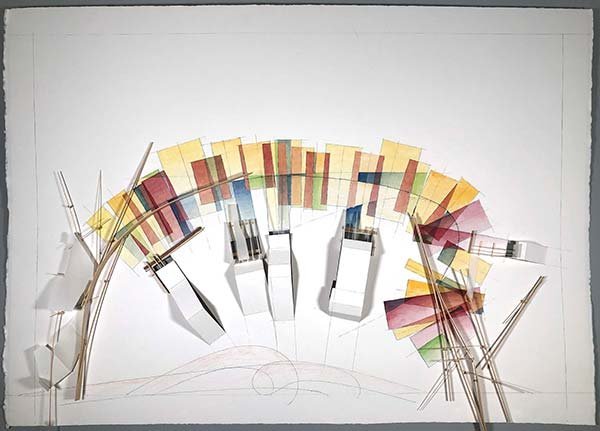
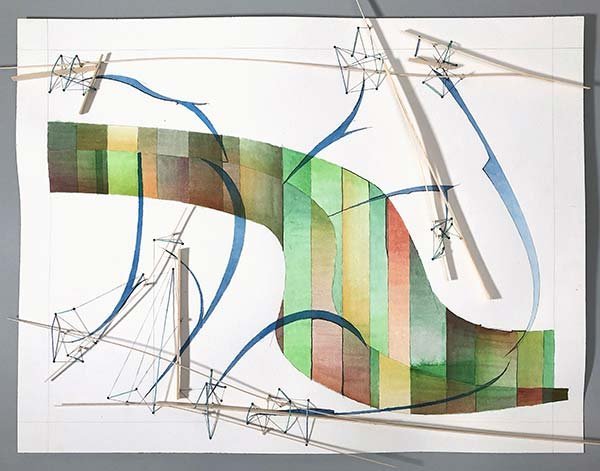
Nelson: Trained as an architect, you’ve gone down a few different life paths—how does the architect inform the visual artist, and vice versa? And can you talk about your brief foray as saucier?
Humphries: Architects draw. The architect part of me informs my drawings because it is the primary means of communication in the field of architecture. I started drawing larger and with more abstraction because it allows ideas to be pushed out faster and I can use colors, which I never could on a building. In the past, architects distinguished themselves by not only their buildings, but by their drawing. There is currently a loss of preparatory sketches, abstracts, and conceptual paintings. My creative work continues to explore drawing as an essential part of the design, demonstrating within the discipline the need to push both new ways of drawing and to understand the integral nature drawings and collages play in seeing new forms and space (I hope). Well—as a saucier, I made lots of sauces and did tons of prep work. I failed out of architecture school after my first year; I was too young and not prepared for the stresses. I decided that maybe cooking would be a less stressful field. How difficult could it be? I found out and returned to architecture at the University of Texas, Arlington.
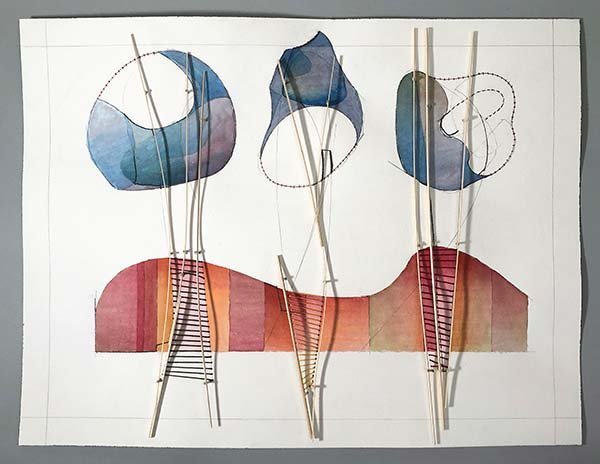
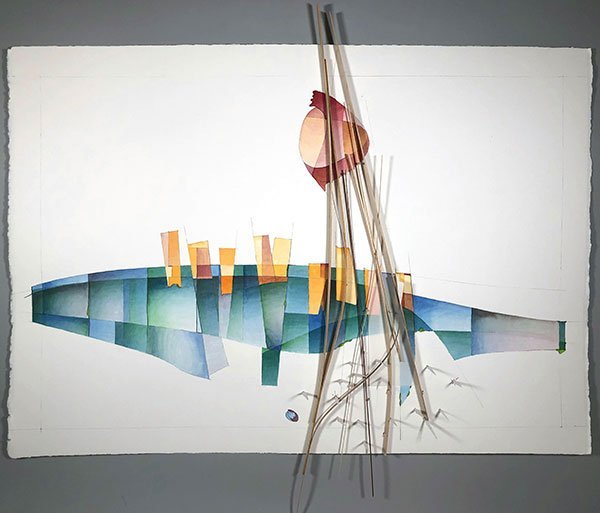
Nelson: Ceramic Critters is an interesting departure, but also certainly echoes the structural elements in your drawings. Can you talk about this?
Humphries: These are mostly just fun and playful pieces meant to be cuddled and held. They do have a structure and visual presence but are designed for the hand as much as for the eye. I often call them Charlies—as in a Charlie in a Box from Rudolph the Red-Nosed Reindeer kids show. They are kind of misfits that need your understanding.
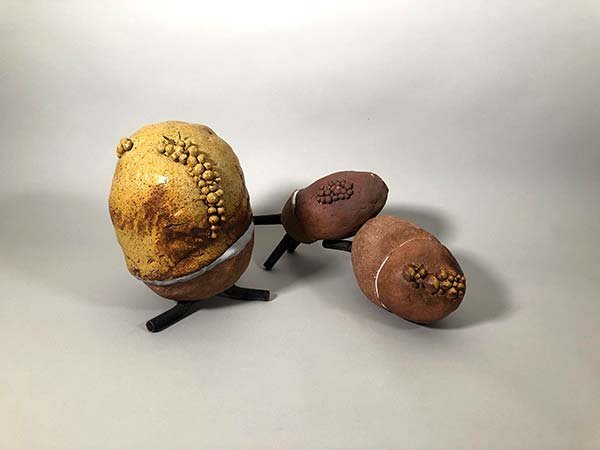
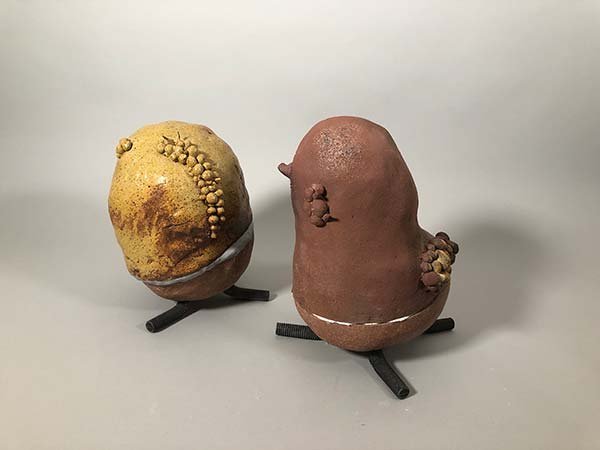
Nelson: Then there is your 49 Seasons of Ceramics series, again ceramics, but here you seem to have moved away from the architectural into an entirely different vein. Can you talk about how you made this move into ceramics, as well as about your Functional Wares series?
Humphries: Functional work is just part of learning and practice. I think ceramics is the next logical step for the latent architect in me. It can scale and has a permanence that drawing does not. I make very few sketches or plans for the ceramic work, just a series of operations or steps I think will be fruitful. This is fine with ceramic since it is nearly infinitely recyclable, until fired. There’s a long and celebrated tradition of seasonal attunement in Japan.
The Japanese calendar was made to conform to the Gregorian calendar in 1873 during European influenced “modernization.” According to this division of time, traditional seasons were plotted on an ancient lunar calendar. A perfect translation of lunar to solar time is nearly impossible—I think it has only been done by the Anasazi. The differences caused most of the traditional Japanese holidays and seasons to shift in time and show up on the new solar calendar months later than the original seasonal timings. Imagine the years broken into periods of time each of just several days corresponding to an event in nature. The idea is that the passage of the year is not based upon a clockwork mechanism or arbitrary numbers on a calendar, but by the activities of the natural environment, it is an everyday life almanac. Some of the seasons are: “The Mountain Stream Freezes Over,” “Rain Moistens the Soil,” “Grass Sprouts,” “Swallows Return,” or “Praying Mantises Hatch.”
These ceramic pieces are based upon the Japanese notion of seventy-two seasons. My new pieces are trying to depict the passage of time in the Midwest by activities and phenomena rather than arbitrary dates. Included in my list of events are: “The First Prediction of Snow,” “Harvesting of the Corn,” “The Last Mowing of the Year,” “The Geese Return,” “Peas Are Planted,” or “Running of the Wiener Dogs.”
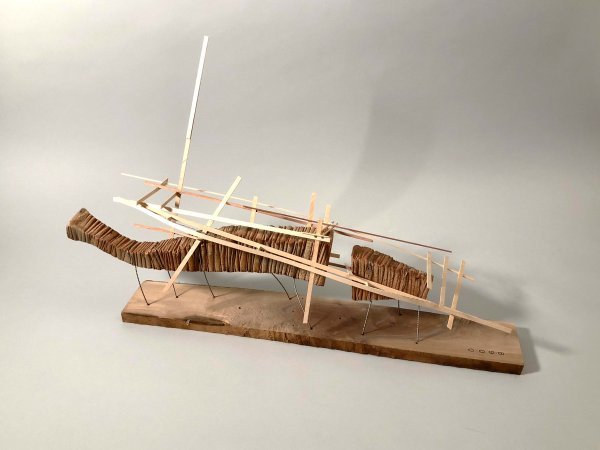
Nelson: What is your first memory of yourself as a visual artist?
Humphries: It relates to my first memory of when I was asked at the age of about five, “What do you want to be when you grow up?” My first answer was if I needed a job, I wanted to be the garbage man. They get to work on big trucks, play with trash, and only work one day a week—this is how often they came by to collect the garbage. After I was discouraged from this career path, I said I wanted to make things like castles or big metal things—I had recently seen Richard Serra’s work—or drawings.
Nelson: How do you see your artwork evolving in the future?
Humphries: Fundamentally, I really have no idea where it will head. I am entering an intensive phase where I will try to link drawing and painting more intimately. This I plan to do as I extend my education at Pacific Northwest College of Art. Maybe the ceramic work will become larger (2–3m tall) and be like cairns in the landscape. The drawings are already moving in a larger direction. I find it strange that as the work becomes larger, the drawings become more intimate. I thought the scale would not allow for intimacy.
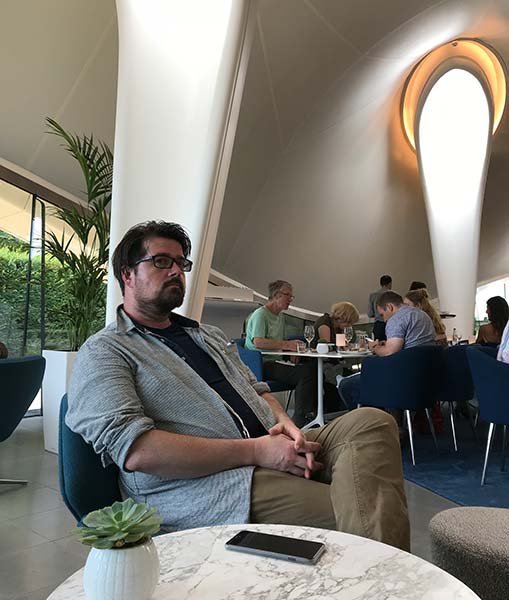
Copyright 2019 Woven Tale Press LLC. All Rights Reserved.

